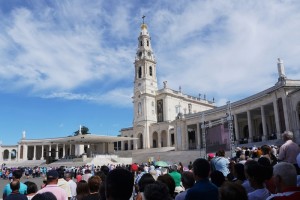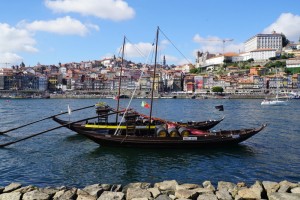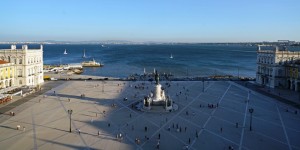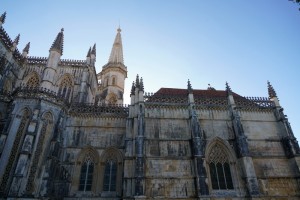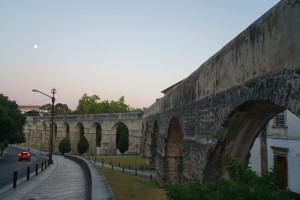rtugal- Lisbon, Fatima and Porto August 31 – September 4, 2017
Trip Plan
In 2009, I spent five days over Christmas on the Camino de Santiago walking from Sarri to Santiago de Compostela. I was joined by Kai, an old friend from my HKU days. I find the camion, or the Way of Saint James in English, spiritual and enjoyable. When I met Aliana in Hong Kong last year, she was inspired to take the camino after seeing a documentary. Elaine and Tsui, Kai and two of Elaine’s friends were interested too. All except Kai and I are first-time visitor to Portugal and Spain. Hence, I suggested we begin our trip in Lisbon, visit Fatima and Porto before beginning the camino in Tui. The distance to Santiago de Compostela is 119km and a person walking over 100km is able to get a certificate. I contacted A2Z, a Portuguese biking and walking agent, to arrange our trip including a self guided walk to Santiago de Compostela.
Camino de Santiago
St James the Apostle was ordered to preach Christianity in Hispania after the death of Jesus Christ around the year 40AD. He arrived at a southern port on the Iberian peninsula, went north through Portugal and preached in the region for two years before returning to Palestine. He was decapitated on the order of Herold Agrippa and his disciples brought his body to Spain for burial. According to one legend, they asked Celtic Queen Lupa who ruled the Roman regions of Finisterra for help to transport the body from the coast. Instead, she mocked them and sent two wild bulls. When the animal arrived at the saint’s tomb, they turned into oxen and took the body to its present location. A mausoleum was erected over the tomb. Two other tombs which are said to be those of the saint’s disciples, Athanasius and Theodore, were also found in the mausoleum. Thereafter Christians were persecuted and the mausoleum was forgotten till the 9th century at the time when local kings struggled to regain control from the Moors. In 813AD, a ‘celestial light’ led the hermit Pelayo to the Field of Stars Compo Stellae and discovered the tomb of the saint. In 814, King of Asturias, Alfonso II, commenced the building of a basilica church and declared St James the patron saint of Spain.
Pilgrimages to the shrine of St James in Santiago de Compostela began around the middle of the 10th century becoming increasingly popular and reaching a climax by the middle of the 15th century.
Camino de Santiago with a serial site was inscribed on the World Heritage List in 1993. Today as many as 12 routes can be identified. The Original Way or the oldest route first taken in the 9th century begins in Oviedo (320km). The most popular route is the French Way starting at Saint-Jean-Pied-de-Port (about 800km) followed by the Portuguese Way starting at the Se Cathedral in Lisbon (610km). In recent years, over 200,000 people walk the whole or part of the camino a year.
Day 1 August 31 Thursday: Lisbon
The Hong Kong group (Elaine & Tsui, Kai and Lovisa) and the Canadian group (Aliana and Igraine) was scheduled to land around 9am and after 11am respectively. I therefore stayed in the hotel after breakfast to wait for their arrival. By 1pm, I still had no news from anyone. What had happened?
Finally my friends began to show up in two batches after 2pm. The Hong Kong group was delayed and decided to wait for the Canadian group. The latter arrived on time but wasted two hours queuing up at immigration! They were hungry and we rushed out to a nearby restaurant for a simple lunch with grilled fish and sardines. As they were not deadly tired, we began sightseeing after lunch. I took them through narrow streets to the Alfama district.
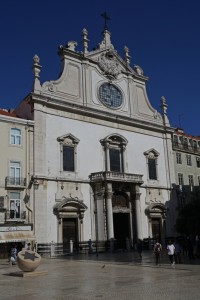 |
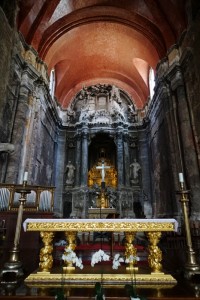 |
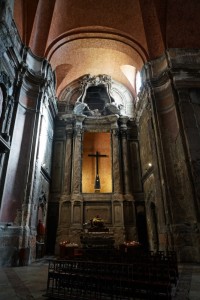 |
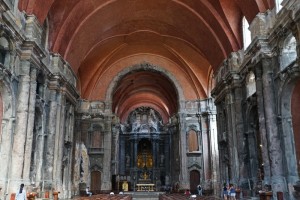 |
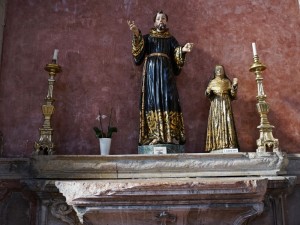 |
We used our Lisbon Pass to take tram 12 heading up to the São Jorge Castle perching on hill top. Nice panoramic views! As we did not have much time, we gave the castle a miss. It is not covered by the Pass anyway.
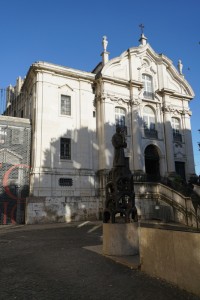 |
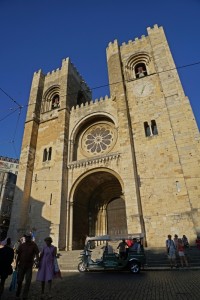 |
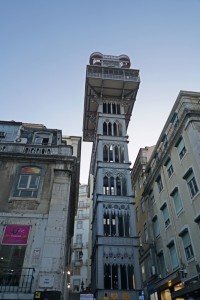 |
We took a bus and planned to visit the Sé Cathedral the starting point of the Portuguese Way. Consecrated in 1150, the original structure was totally destroyed in the 1775 earthquake. The present romanesque cathedral with twin castellated bell towns is a blend of architectural styles. We missed the bus stop and had to walk back. As a result, we passed by St Anthony Church which was built upon the house where the saint was born. It is now a pilgrimage site as the saint is very popular in Portugal. We spent a while to watch a mass for an English-speaking group of pilgrims.
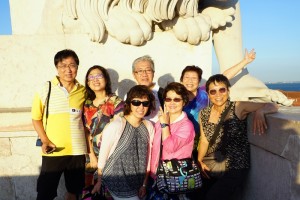 By the time we arrived at Sé Cathedral, it was 7pm. The doors were closed in front of our eyes. What a pity! We then walked to the Arco Monumental da Rua Augusta and took a free lift to the top. We had fabulous 360 degree views of the Tagus, the huge waterfront square, Praça do Comércio, the old city, the castle etc. The golden sunlight and sloothing wind blew away my friends’ tiredness. We were all cheerful and took our first group photo.
By the time we arrived at Sé Cathedral, it was 7pm. The doors were closed in front of our eyes. What a pity! We then walked to the Arco Monumental da Rua Augusta and took a free lift to the top. We had fabulous 360 degree views of the Tagus, the huge waterfront square, Praça do Comércio, the old city, the castle etc. The golden sunlight and sloothing wind blew away my friends’ tiredness. We were all cheerful and took our first group photo.
We walked past the Santa Justca Lift which we could take a free lift to the top for more panoramic views. Unfortunately the queue was very long. We skipped it and walked to the ruins of Carmen to look for a restaurant recommended to us. It was already fully booked and we had to find another restaurant in the area. I ordered mussels which were small and disappointing. Aliana had pork which was surprisingly delicious and tender!They were all tired and wanted to go to bed. Kai even felt asleep while waiting for his grilled fish. We took the metro and were back in the hotel around 10pm. My friends were dead tired.
Day 2 September 1 Friday: Lisbon
I suggested my friends start at the Jeronimos Monastery. Kai went with them though he had visited it years ago. While they were in the monastery, I walked uphill to reach the National Ethnology Museum which I could visit free with the Pass. It is said to house over 26,000 objects. One of its most important collections is those of African art. Unfortunately, only one hall with beautiful and exquisite exhibits from Indonesia, Mali and Angola was open. Had I known only a small collection was on display, I would not have come.
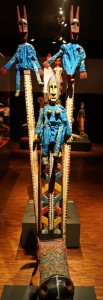 |
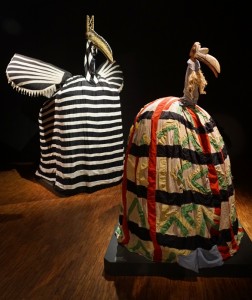 |
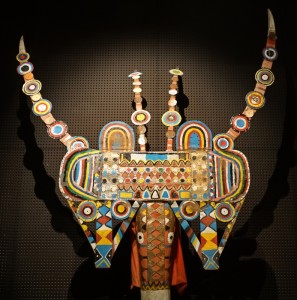 |
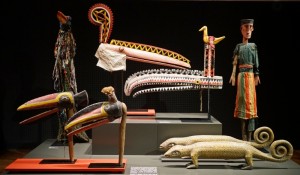 |
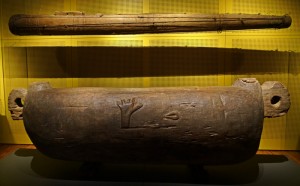 |
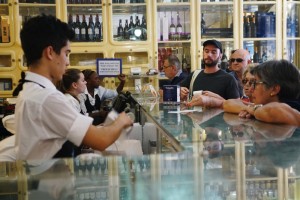 I would meet up with the group outside the Tower of Belém at 12:30pm. As I had time, I went to the famous Patisserie de Belém near the monastery to buy six tarts for my friends. I was the first to arrive and joined the long queue. Built between 1514 and 1520, the tower was a key element of the defensive complex at the mouth of the Tagus. It also represents the high point of decorative Manueline architecture. Its ornate façade is adorned with fanciful maritime motifs. It is picturesque as its shape recalls the traditional keeps of medieval castles.
I would meet up with the group outside the Tower of Belém at 12:30pm. As I had time, I went to the famous Patisserie de Belém near the monastery to buy six tarts for my friends. I was the first to arrive and joined the long queue. Built between 1514 and 1520, the tower was a key element of the defensive complex at the mouth of the Tagus. It also represents the high point of decorative Manueline architecture. Its ornate façade is adorned with fanciful maritime motifs. It is picturesque as its shape recalls the traditional keeps of medieval castles.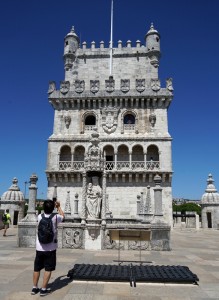
They soon arrived and were delighted to taste the tart. It was a beautiful sunny day and we did not mind queuing at the beginning. Unfortunately, the queue moved at snail pace and we ended up wasting an hour and a half in the queue. The main problem is that the tower only allows 120 visitors inside as the staircase leading to the top of the tower is so narrow that only a person can pass.
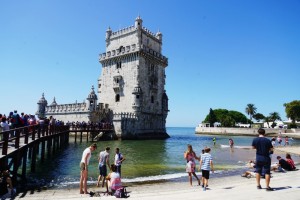 The Portuguese are not known for efficiency or crowd management. Visitors climbed up and down the staircase unregulated causing further delay. Above all, unregulated traffic could be dangerous. Had I known we would waste so much time in queuing, I would have given it a miss. A photo taken outside the castle would suffice. Instead we could have spent the time walking to the Discoveries Monument built in 1960 to commemorate its golden Age of Discovery. It was late and we had fish for lunch after 3pm in a nearby restaurant.
The Portuguese are not known for efficiency or crowd management. Visitors climbed up and down the staircase unregulated causing further delay. Above all, unregulated traffic could be dangerous. Had I known we would waste so much time in queuing, I would have given it a miss. A photo taken outside the castle would suffice. Instead we could have spent the time walking to the Discoveries Monument built in 1960 to commemorate its golden Age of Discovery. It was late and we had fish for lunch after 3pm in a nearby restaurant.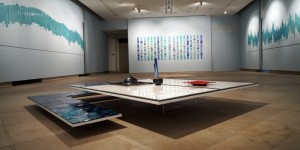
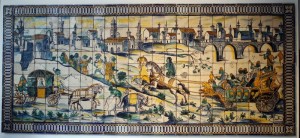 We had time only to visit one more attraction. I suggested the Tile Museum as I like the styles and designs of Portuguese tiles. We had a long bus ride to the eastern side of the city. The time was well spent as the exhibits are exquisit and unique. As a former Convent of Madre de Deus founded in 1509 by Queen Leonor de Lencastre, wife of King João II, the building includes the St Anthony’s chapel, a beautiful 16th cloister, an most ebullient and decorative church interior which is a sumptuous Baroque showcase of gilded woodwork and a stunning Rococo altarpiece. However. I find the ‘Chicken’s Wedding’ picture on tiles most amusing. An Japanese artist Haru was opening her solo exhibition in the museum. We stayed behind and mixed with the guests to see her installation. A bonus!
We had time only to visit one more attraction. I suggested the Tile Museum as I like the styles and designs of Portuguese tiles. We had a long bus ride to the eastern side of the city. The time was well spent as the exhibits are exquisit and unique. As a former Convent of Madre de Deus founded in 1509 by Queen Leonor de Lencastre, wife of King João II, the building includes the St Anthony’s chapel, a beautiful 16th cloister, an most ebullient and decorative church interior which is a sumptuous Baroque showcase of gilded woodwork and a stunning Rococo altarpiece. However. I find the ‘Chicken’s Wedding’ picture on tiles most amusing. An Japanese artist Haru was opening her solo exhibition in the museum. We stayed behind and mixed with the guests to see her installation. A bonus!
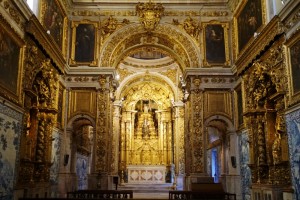 |
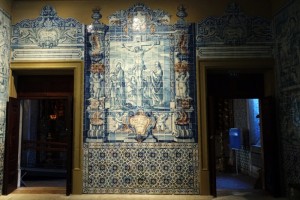 |
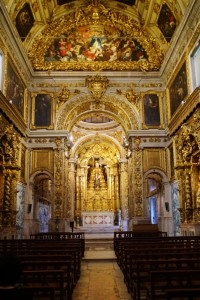 |
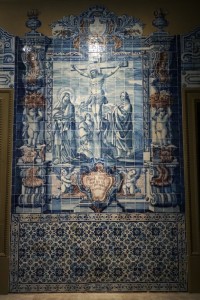 |
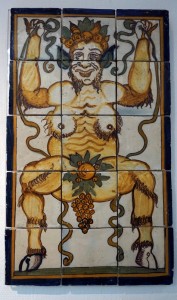 |
We took a taxi back to the hotel and had a dinner in an up-market seafood restaurant near the hotel.
Day 3 September 2 Saturday: Sintra
Today, we met our guide cum driver Carlos for the first time. He is just over 30, cheerful and energetic. We asked him to take us to to see the Sanctuary of Christ the King in Almada located on the other side of the Tagus. We went over the impressive April 25 Bridge.
Inspired by the Christ the Redeemer statute of Rio de Janerio in Brazil, the Portuguese built this monument dedicated to the Sacred Heart of Jesus Christ. The project was inaugurated on May 17, 1959 as an expression of gratitude for the country being spared the effects of WWII.
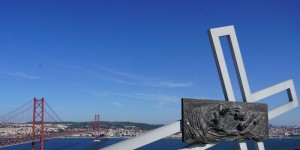 |
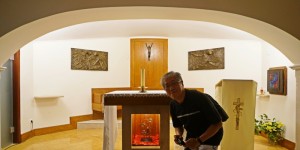 |
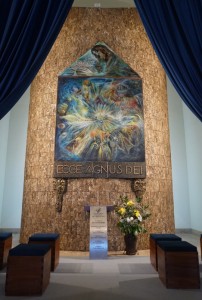 |
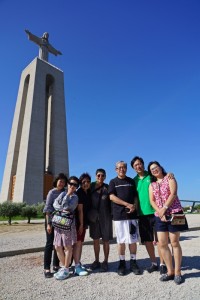 |
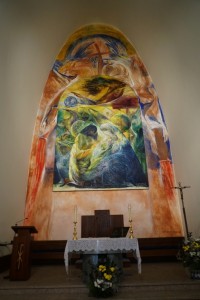 |
Our next stop was Cabo da Roca in the Natural Park of Sinta -Cascais. This is also the westernmost point of continental Europe. This stretch of the Atlantic coast is rocky.
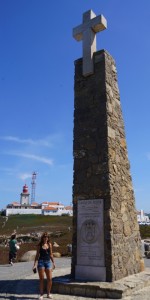 |
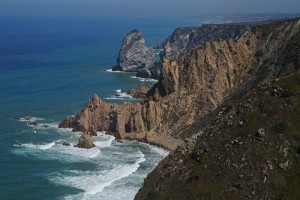 |
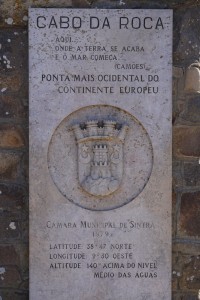 |
We went to Restaurant “Adega das Azenhas” and had two large grilled fish (€40 a kg), pork and vegetables. A delicious lunch!
After lunch, it was fast approaching 4pm. Carols suggested we visit Quinta da Regaleira a World Heritage property (€6 pp). This was the summer residence of the Carvalho Monteiro family built in the neo-Manueline style. It is considered one of the most surprising and enigmatic monuments of the Cultural Landscape of Sintra. Between 1898 and 1912, Carvalho Monteiro transformed the place to its presnt form with gardens, an initiatic well, underground walkways like a maze, grottos, foundations, waterfall, cistern and towers. We spent an hour walking through the artificial landscape. I do not find it interesting nor impressive. We spotted the Pena Palace, another World Heritage property the porch of the residence.
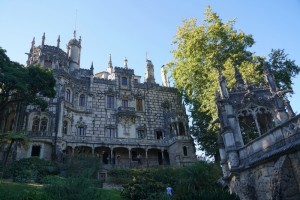 |
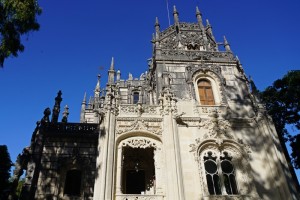 |
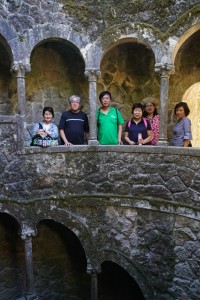 |
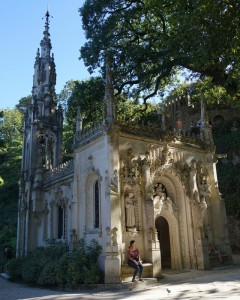 |
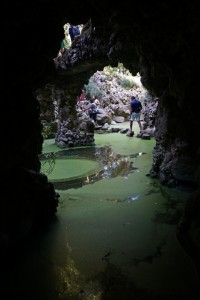 |
We asked Carlos to take us to the Park and the Pena Palace are considered the finest example of 19th century Portuguese Romanticism and the integration of natural and built heritage. They constitutue the most important part of the Cultural Landscape of Sintra’s World Heritage Site. In medieval times, a chapel was built here dedicated to Our Lady of Pena. By 1503, the Convent of Our Lady of Pena was donated to the order of the Hieronymites by the King Don Manuel I. In 1838, Don Fernando II purchased the monastery and soon began constructing a new palace. The present structures was built by Dona Maria II (1819-53), Don Fernando II (1819-85) and the Conntess of Edla (1836-1929).
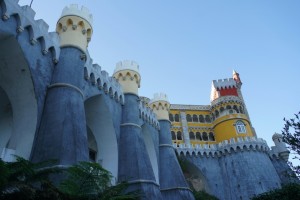 |
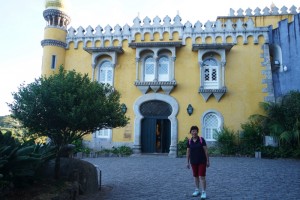 |
It was after 6pm when we arrived at the entrance. The Palace would be closing at 7:30pm. We decided to pay €14 for a short visit. To save time, we would take a bus to the palace (€3 for a return ticket). The palace though compact is not small: I hardly had time to walk through the palace. I followed the visitors’ path. But the best part I think is the visit to the Chapel which is the original part of the ealy monastery of the Hieronymites monks, the Triton (the allegorical gateway of the Creation with half-man half-fish figure and the geometric Moorish tiles at the Main Facade. I find the structures with different architectural styles and bold coloures strangely attractive and surreal. The interior and furniture are equally strange. Views of Sintra and the expansive park from the windows and balcony are fantastic. We had to take the last bus at 7:15pm back to the entrance and departed for Lisbon at 7:30pm.
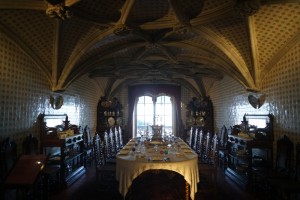 |
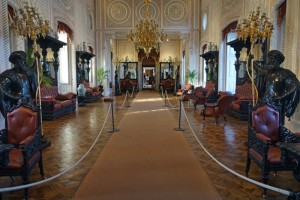 |
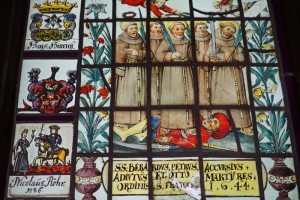 |
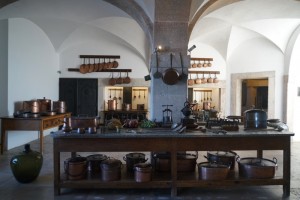 |
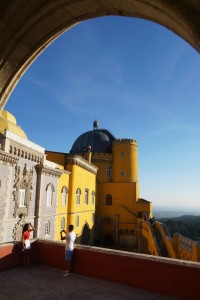 |
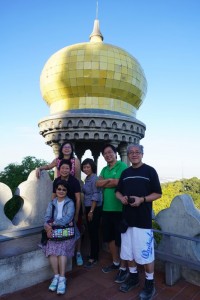 |
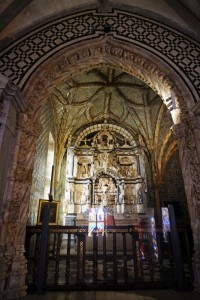 |
As we only had about three hours in Sintra, I would rather spend all the time in the Park and the Pena Palace. Carlos took us to Restaurant “A Marisqueira do Lis” in Lisbon and we tasted two types of crabs. Carlos found us the most value for money items and we only paid less than €150 for a hearty seafood dinner with wine!
Day 4 September 3 Sunday: Fatima – Porto
We set off after 8:30am for the Sanctuary of Our Lady of Fátima and arrived at this popular pilgrimage site beofre 11am. The sanctuary includes the Basilica of Our Lady of Rosary, a great oak tree (near which the Marian Apparitions occurred), a monument to the Sacred Heart of Jesus and the Chapel of the Apparitions where Lucia Santos and her cousins Jacinta and Francisco Marto, were first visited by Mary in 1916.
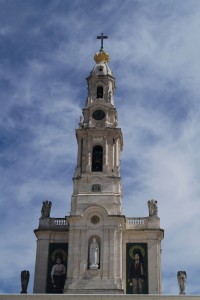 |
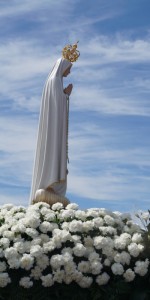 |
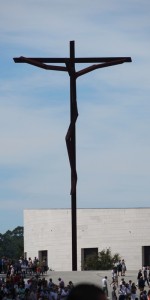 |
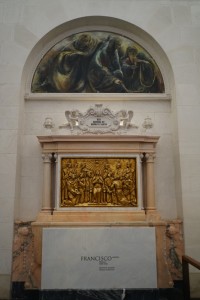 |
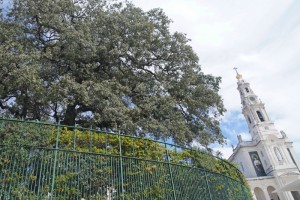 |
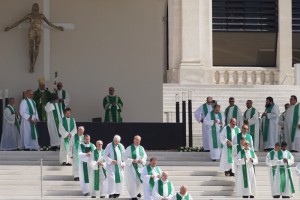 |
We first went to the basilica and saw the tombs for Lucia, Jacinta and Francisco who witnessed three apparitions of an angel in the region of Ourém in 1916 and several apparitions of the Blessed Virgin Mary in 1917 and were told three secrets. As a result, , the region of Fátima became a destination of pilgrims. Jacinta and Francisco were canonised at the Sanctuary on May 13 2017, the first centennial of the first Apparition of Our Lady of Fatima.
That morning, an outdoor mass was being held. We stayed till the end of the service and I watched the procession of the image of Virgin Mary from the altar to the Chapel of the Apparitions at the end of the service. It was atmospheric.
We left after 1pm. On Sunday, itis not easy to find a place to eat. We finally had lunch at Restaurant “a Gralha” just outside the Santo António Caves. A meal for 8 was less than €70. The portions are enormous!
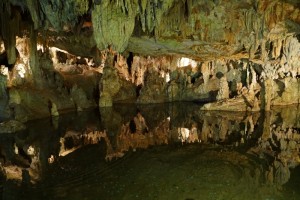 |
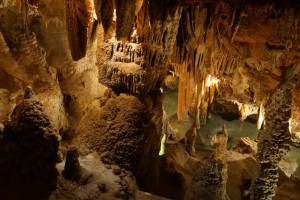 |
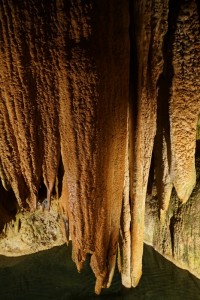 |
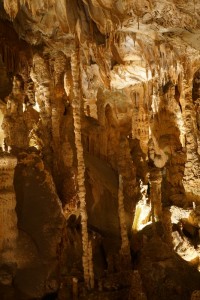 |
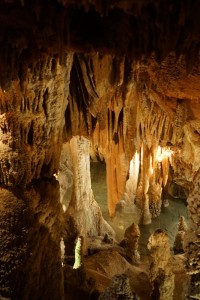 |
I have been to a fair number of caves in many countries. Anyway I find these caves though small, are beautiful with amazing colours and formations of stalactites and stalagmites, underground rivers, ponds and caves. It’s worth visiting. Aliana was not feeling well and stayed outside.
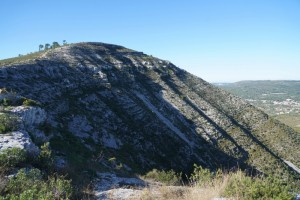 |
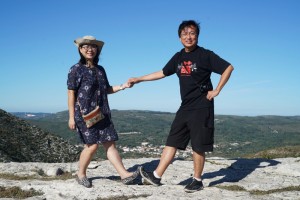 |
After the caves, Carlos took us to Fórnea, a picturesque natural depression. After taking some photos we left for the Monastery of Batalha, a World Heritage property. We arrived around 6:15 pm. The staff refused to let us in as the ticket office was closed at 6pm. When Carlos checked their website, there was no mention of the close of the ticket office at 6pm. We were upset by the rude behaviour of the staff.
Carlos suggested a visit to the University of Coimbra, another World Heritage Property before having dinner. It was just before 7pm when we arrived and the place was deserted on Sunday. We saw some main buildings of the University and took a few photos at a lookout point before heading to the Restaurant “Virgilio does Leitões” for suckling pig. The region is famous for suckling pigs: I indeed have the best suckling pig here. The meat was juicy, tender and most delicious!
After dinner, Carlos still had to drive an hour and a half before reaching our hote in Porto. It started to rain and we all felt asleep. Carols got us safely to our hotel next to the St Idefonso Church and the S João National Theatre around midnight. We said good-bye to Carlos after having a great time with our jolly guide.
Day 5 September 4 Monday: Porto
Located along the Duro river estuary, Porto is one of the oldest European centres with settlement dating back many centuries. One of the country’s internationally famous exports, port wine, is named after Porto. The historic centre of Porto is a World Heritage Site. The city with its long history, countless monuments and churches and lovely old buildings of different architectural styles is enchanting and charming. The tourism infrastructure has vastly improved immensely since my last visit more than ten years ago.
Both Aliana and I were tired and did not get up till 9am. Aliana coughed a lot at night and did not sleep well. She felt tired and did no join us on a city walk. Burt she would love to take a boat ride at sunset. The group of six left the hotel around 11am. We strolled leisurely and stopped for almost an hour in the old Mercado do Bolhão. The fruit stall at the entrance sold over 40 types of fruits. Many tourists were taking photos of this rustic, run-down but authentic and lively market.
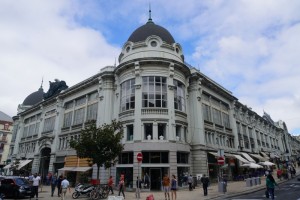 |
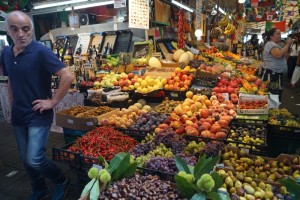 |
We then walked along the Av dos Aliados with grandious old buildings lining both side of the main road. The old part of Porto with narrow alleys is lovely and atmospheric. most appealing.
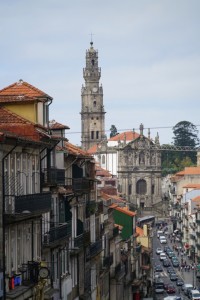 |
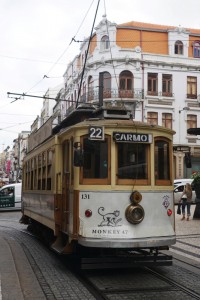 |
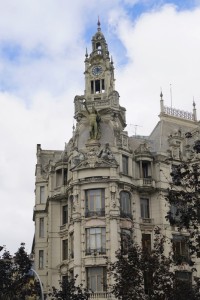 |
We spent another hour having coffee and ice cream in a roadside cafe soaking in the atmosphere of this idyllic old town. We found a tourist agent and brought seven tickets for a boat ride at 5:30pm. We told Aliana to find us next to the pier.
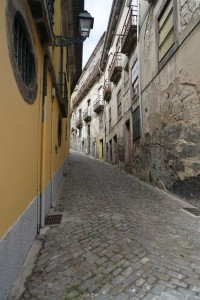 |
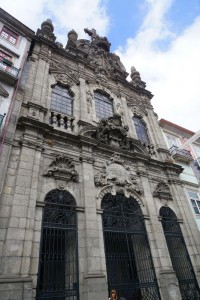 |
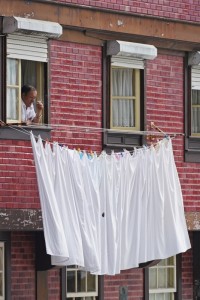 |
I strolled leisurely on my own till I met the group up for lunch at 2:45pm. I went to the palace where Henry de Navigator was born and the St Francisco Church. If I would return to Porto for the third time, I would buy a Porto Card and spend more time to visit the churches and museums.
After lunch, I walked across the Ponte Luis I to see the famous port wine houses. The whole area is more developed and touristy.
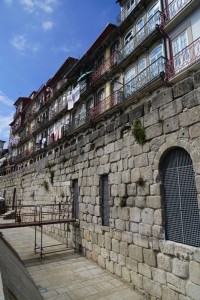 |
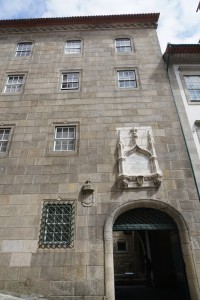 |
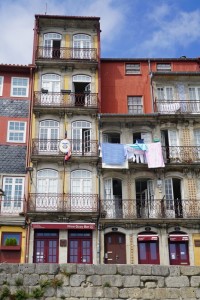 |
As we could not find Aliana before the boat left, we took the 6pm boat instead. The 50-minute ride took us to the six bridges on River Douro namely Ponte da Arrábida at one end, Ponte Luis I, Ponte do infanta, Ponte d Maria Pia, Ponte de S João and Ponte do Freixo to the other end. The ride lasted less than an hour. We had sunshine and enjoyed the leisure boat trip.
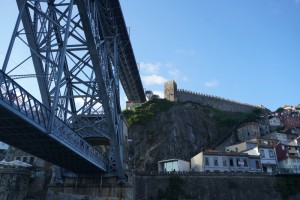 |
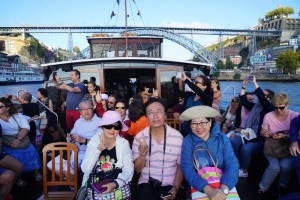 |
We were tired and did not want to walk. So we took a tram (€2,50 one way) to the upper town where we could take a walk on the upper part of the Ponte Luis I. The sun was setting and we had fantastic views of the old town and the river.
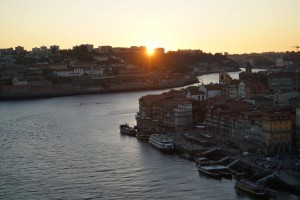 |
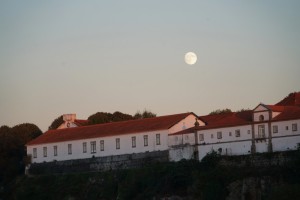 |
Aliana had found a decent Chinese restaurant by the bridge. We missed Chinese food and decided to go for a change. We ordered vegetables and paid less than €65 for dinner. We walked back to the hotel and went to bed early as we would begin the camino the next day.


